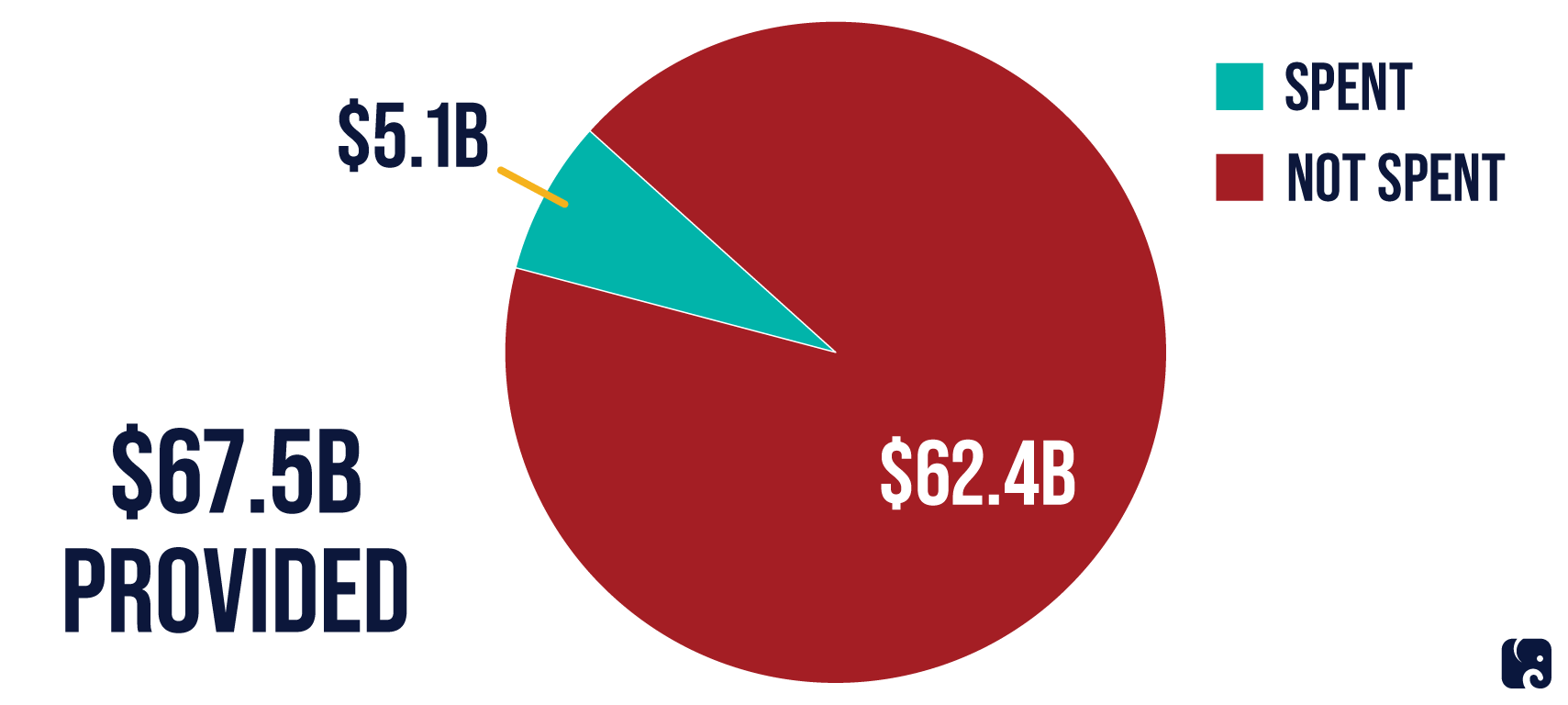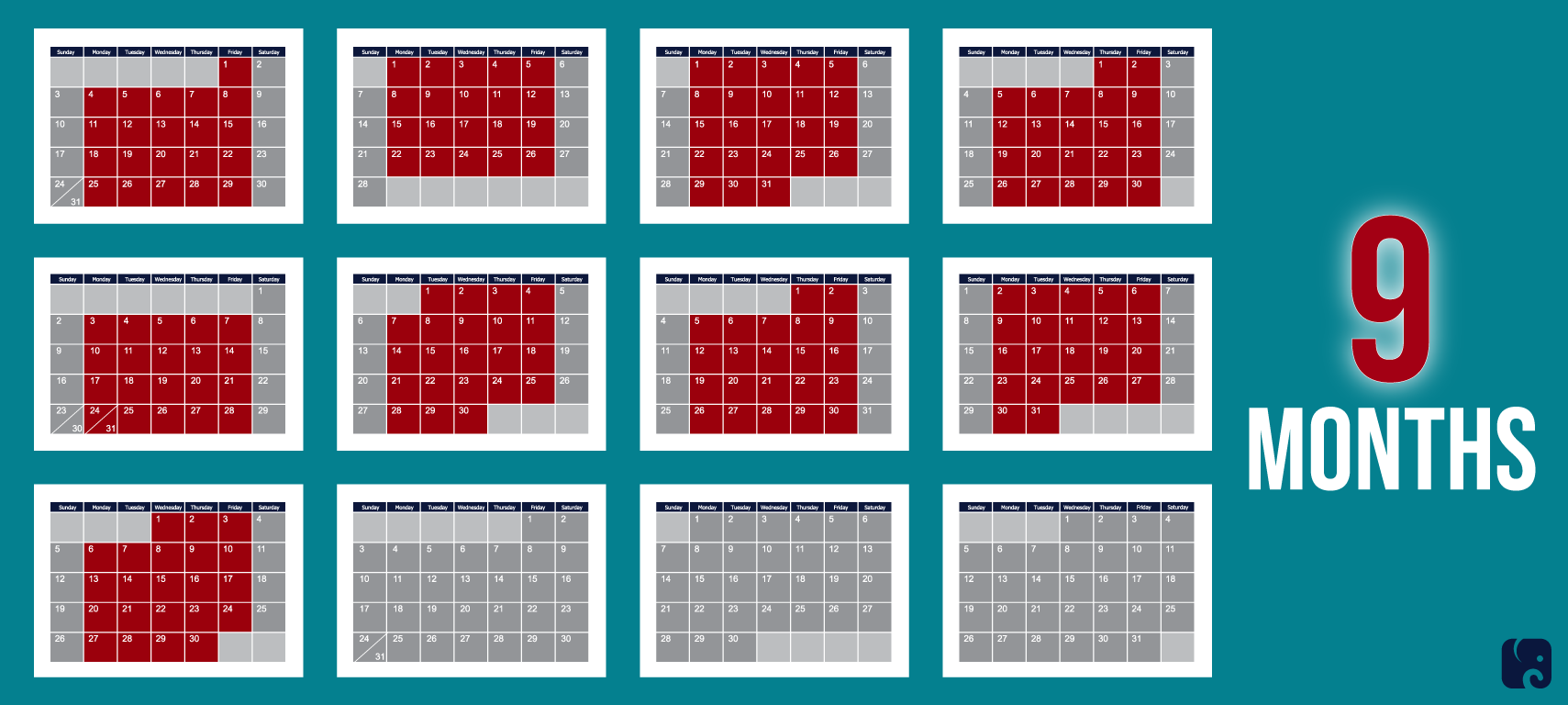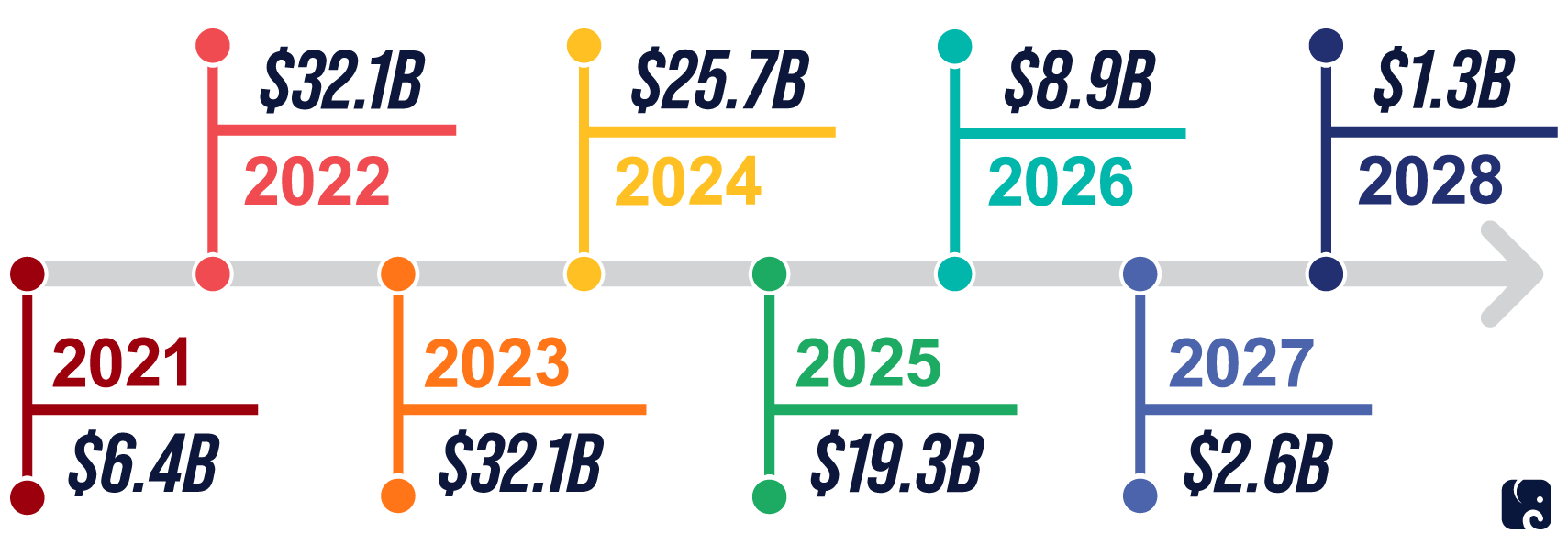Reopening Schools Safely
KEY TAKEAWAYS
- Congress has provided $67.5 billion to help schools respond to the COVID-19 pandemic and bring students back into classrooms safely. Most of it remains unspent.
- Students have fallen behind academically after abrupt school closures last year; McKinsey estimates students could lose nine months of learning by the end of the school year.
- Democrats have said their $1.9 trillion reconciliation bill is “emergency” COVID-19 funding, but only 5% of the new money for K-12 schools would be spent by the end of this fiscal year.
Through bipartisan COVID relief laws enacted since last March, Congress has provided schools with $67.5 billion to help them respond to the coronavirus and reopen safely. As of February 19, only about $5.1 billion of the emergency relief aid has been spent.
Most Education Relief Funding Remains Unspent

Democrats say their massive COVID relief bill is “emergency” funding and have included $128.6 billion more for K-12 schools, but the Congressional Budget Office projects that just 5% of it – or $6.4 billion – would be spent by the end of this fiscal year. CBO projects it will take seven years for the rest of the money to be spent.
Emergency Funds for Schools Remain Unspent until 2028
After schools closed abruptly last year, educators had to switch to remote teaching and try to get computers to students who didn’t have one. Parents have had to juggle their own work and overseeing their children’s school day. One study estimated that a lack of devices or internet access, a lack of accommodations for students with disabilities, and other factors meant that 3 million students may have “functionally disappeared” from school since March. In December, McKinsey & Company reported that, if the status quo continues, students could lose an average of nine months of learning in math by the end of June 2021.
Potential Learning Loss by the End of the School Year

The potential long-term consequences of the lost learning are staggering. John King, education secretary under President Obama, said, “I think we should be very concerned about the risk of a lost generation of students.” An analysis by the Organization for Economic Cooperation and Development found that learning losses of one-third of a school year in the U.S. could mean at least 3% lower lifetime earnings for affected students and trillions of dollars in lost economic output for the country over the rest of the century.
The pandemic has disrupted students’ routines and made them more isolated from friends and other social support. The Children’s Hospital Association and American Academy of Pediatrics recently reported that hospitalizations were up last summer, with increases of almost 20% for suicide attempts and more than 40% for disruptive behavior disorders.
The National Academies warned last summer that schools should prioritize getting students back in the classroom safely. In January, Centers for Disease Control and Prevention researchers reviewed data on reopened schools and found “the preponderance of available evidence from the fall school semester has been reassuring insofar as the type of rapid spread that was frequently observed in congregate living facilities or high-density worksites has not been reported in education settings in schools.” Dr. Anthony Fauci, the president’s chief medical adviser, said, “I would back the CDC recommendations because that is really based on data … we need to try and get the children back to school.”
Despite President Biden’s promises to get students back in school, many students are still locked out of traditional in-person learning. The status of schools varies around the country, with one tracker reporting that, as of February 28, just under 45% of students were attending schools that offer traditional in-person learning. The share of students at schools offering hybrid learning and those at virtual-only schools were each roughly 28%.
In February, the CDC released an operational strategy for how K-12 schools can reopen safely if they use mitigation strategies such as masks, physical distancing, and contact tracing. The guidance includes recommendations for “phased mitigation and learning modes” based on community transmission, though some researchers have criticized this standard and said it will keep students out of school. The CDC also said that while vaccinating teachers is a priority, “access to vaccination should not be considered a condition for reopening schools.”
Next Article Previous Article

